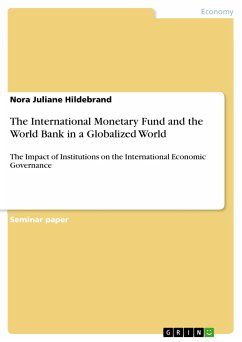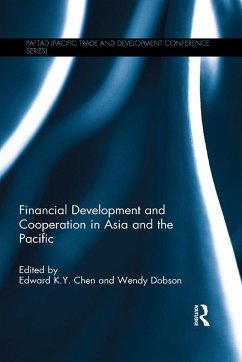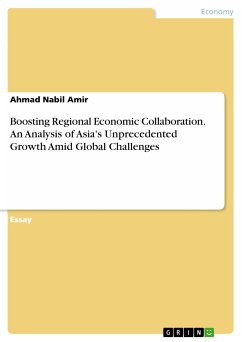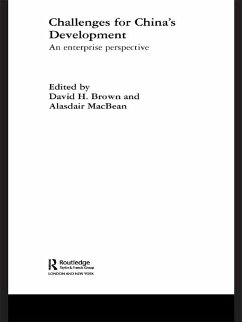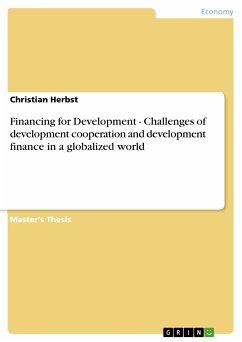
Financing for Development - Challenges of development cooperation and development finance in a globalized world (eBook, PDF)

PAYBACK Punkte
0 °P sammeln!
Master's Thesis from the year 2005 in the subject Economics - International Economic Relations, grade: 1,7, Stralsund University of Applied Sciences, language: English, abstract: Preface The recent years have been the era of globalization with enormous growth in international trade, financial flows and foreign direct investment (FDI). Globalization intensifies interdependence between formerly separated nations, however the world seems to be more fragmented, between the rich and the poor, between the powerful and the powerless, and between supporters and opponents of the new global economy. Cur...
Master's Thesis from the year 2005 in the subject Economics - International Economic Relations, grade: 1,7, Stralsund University of Applied Sciences, language: English, abstract: Preface The recent years have been the era of globalization with enormous growth in international trade, financial flows and foreign direct investment (FDI). Globalization intensifies interdependence between formerly separated nations, however the world seems to be more fragmented, between the rich and the poor, between the powerful and the powerless, and between supporters and opponents of the new global economy. Current figures reveal the contradiction between those that have managed to benefit from globalization, and those that are considered to be the losers of this period: A girl born in Japan has a 50 percent chance of seeing the chance of seeing the 22nd century, while a newborn in Afghanistan has a 25 percent chance of dying before age 5. The richest five percent of the world's people have incomes 114 times those of the poorest five1, and the world's richest one percent of people receive as much income as the poorest 57 percent.2 The developing countries are currently facing two major problems: The first one is income poverty. In order to reduce the share of people living on one Dollar a day, the per capita income has to grow by 3.7 percent annually according to optimistic estimations. However, only 24 developing countries have realized these growth rates in the recent years. On the other hand, more than 127 countries with 34 percent of the world population have not grown at this rate.3 Many countries have suffered negative growth and the share of the poor people has increased, although the public focused increasingly on the poverty problem in the recent years, as it just happened at the "Live Aid Concert." The second problem is infant mortality. 85 countries are on the track to reduce infant mortality to one third of the 1990 level, but they comprise less than one quarter of the world population. One the other hand, 81 percent of the countries with more than 60 percent of the world population will not be able to achieve this goal until 2015. Every day, more than 30,000 children die of preventable diseases.4 It is dramatic that many countries that will not achieve this goal are among the world's poorest, i.e. the least - developed countries. --- 1 Source: UNDP, "Human Development Report 2002", Oxford University Press, Oxford, 2002, Page 13 2 Source: Ibidem, Page 19 3 Source: Ibidem, Page 17 4 Source: Ibidem
Dieser Download kann aus rechtlichen Gründen nur mit Rechnungsadresse in A, B, BG, CY, CZ, D, DK, EW, E, FIN, F, GR, HR, H, IRL, I, LT, L, LR, M, NL, PL, P, R, S, SLO, SK ausgeliefert werden.




